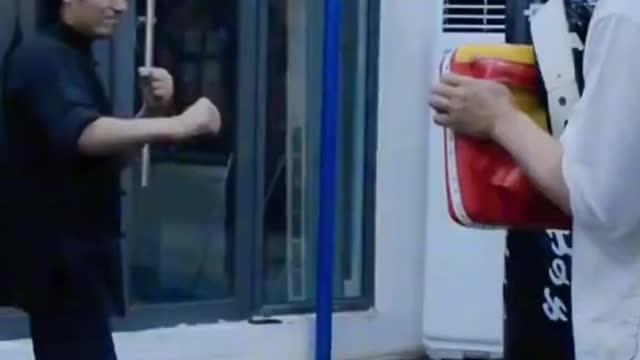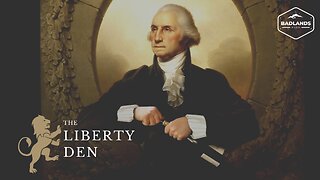Premium Only Content

Bruce Lee Secret Kung Fu Style Revealed
Tai Chi Chuan
Because “Chuan” means “fist”, Tai Chi Chuan can be translated as a set of forms or fist technigues that have the Tai Chi (“Grand Ultimate”) as their source. Tai Chi Chuan is a Chinese Martial Art, or Kung Fu, and Kung Fu is the “art of movement”; this means that the movement executed within Kung Fu, without regard for why it is used, is a movement in which Energy of Essence and Energy of Spirit remain together, unified and undivided, such that the Original Energy - the Tai Chi - can flow.
Tai Chi Chuan is Kung Fu applied to combat, and since this technique handles energy correctly and the handling of energy requires that the body be the ‘Original Body’ and the spirit be the ‘Original Spirit,’ Tai Chi Chuan truly points the way to the Tao. And, not suprisingly, a Taoist was one of the Founders of Taichi Chuan.
The following is an excerpt from The Invisible Web, Master Su’s Tai Chi manual:
Because “Chuan” means “fist”, Tai Chi Chuan can be translated as a set of forms or fist technigues that have Tai Chi as their source. Tai Chi Chuan is a Chinese martial art, or Kung Fu. Kung Fu is “art of movement”, this means that the movement executed with Kung Fu, without regarding what it is for, is a movement in which Energy of Esence and Energy of Spirit stay together so the Original Energy can flow.
Tai Chi Chuan is Kung Fu applied to combat, and since this technique handles energy correctly and since the handling of energy requires that the body be the original body and the spirit the original spirit, Tai Chi Chuan points the way to the Tao. And not suprisingly, a Taoist was one of the Founders of Tai Chi Chuan.
Since there are numerous and inconsistent stories surrounding the origin of Tai Chi Chuan, I will only recount those that are considered the most important in its history and development.
During the Tang Dynasty (A.D. 618-906), about thirteen hundred years ago, two men, Siu Iu-Ping, an intellectual, and Liu Tao-Tzu, a Taoist, started to develop the thirteen movements of Chi Kung for health and meditation.
More movements were added over the centuries until we arrive at Tai Chi Chuan today. Between the Yuen (1280-1368) and Ming (13-1644) Dynasties, ChangShang-Fong(b.1247) had studied Buddhism at the Shaio-Lin Monastery in Ho-Nan, a northern province in China. After this he wandered, finally traveling to Wu-Tang Mountain, where he studied Taoism and its Chi Kung movements. One day he witnessed a fight between a snake and a crane. He was so impressed by their quick movements that he decided to study them. Soft on the inside but very strong on the outside, these animals proved to be excellent examples for people to follow. He compared their movements with the ones he had learned before and analyzed them, giving birth to the movements of Tai Chi Chuan. He altered Shiao-Lin Kung Fu into Wu-Dang Long Fist, which later became Tai Chi Chuan.
He also incorporated special breathing techniques to the movements. The temple where he resided, according to legend, had two columns at its entrance, one larger than the other. When he tried to fix this defeat by removing one column, he was surprised to find a turtle under it, probably mistaken for a stone at the time of construction. During all that time, the turtle was able to survive, thanks to its breathing!. Realizing how important breathing truly was, he made it a crucial skill of Tai Chi Chuan.
Another story relates that Chen Poo, who lived in the state of Ho-Nan about 600 years ago during the Ming Dynasty, put together the Tai Chi style and taught it to his family. During the rule of Emperor Wang, according to yet another story, TongHie studied Chang Chuan (Longfist) and Mi Tzong Chuan (Labyrinth of Deceiving Art). These two styles together gave birth to Tai Chi Chuan. Or another story that originates during the Ming and Ching Dynasties has a general named Chen Wan-Tang, from the Chen Poo family, combining martial arts with the Tao Te Ching and the Nei King, the Yellow Emperor’s medical book. This combination giving birth to the Chen Chia Tai Chi Chuan (Chen family’s Tai Chi).
The last story is perhaps the best know. Chen Wan-Ting (?-1719) was a general who lived in the state of Ho Nan, in the town of Chen Chia Kuo. He was well versed in Kung Fu, both popular and military. He was also knowledgable about Taoist meditation, the I Ching, and self-healing ways of Chinese medicine. One of his guards, Chan Hua (1644-1722), had studied Hsing I since early in his childhood and was also a warrior, fighting against the government of the Ming Dynasty. Chang Hua left him and worked instead for Chen Wang-Ting. Chang Hua was extremely fast, as fast as a horse. While hunting with his master one day, a white rabbit appeared. Chen Wang-Ting wanted to hunt it with his bow and arrow, but his grandson pleaded for him not to kill it but to give it to him instead. The grandfather remarked that the rabbit was too fast to be caught, but Chang Hua ran after it and caught it promplty. With elements of Hsing-I introduced by Chuang Hua, Cheng Wang-Ting created Tai Chi Chuan. Some say that Hsing-I was one of the origins of Tai Chi Chuan, in fact Cheng Wang-Ting wrote a secret book of Tai Chi Chuan that also included Hsing-I Chuan.
ORIGINS OF YANG TAI CHI CHUAN
Originally, Chen Tai Chi Chuan had five forms which were passed down only to Chen Wang-Ting’s family, a kind of treasure rarely shown to anyone outside the family. Around 1800, Yang Lu-Chang (1799-1872), who lived in Beijing, went to Ho Nan to observe this style. But the members of the Chen family did not want to teach any strangers. So Yang took a job in the house of Chen Chang-Xin (the Tai Chi Master), helping with the farming and general maintenance, and for ten years he secretly watched and practiced Tai Chi Chuan.
One day the Chen family was invited to a party in another village, leaving a few people behind to guard the house, including Yang Lu-Chang. A famous Kung Fu master came to the village to challenge Chen Chang-Xin since he had heard that Tai Chi Chuan was a powerful weapon. When he found the master of the house gone, he began to destroy the house and ransack it. Yang Lu-Chang then offered to fight him in place of Chen Chang-Xin.
“You are only a servant,” said the challenger. “How do you dare to fight me?” “I have not studied Tai Chi Chuan,” answered Yang Lu-Chang, “but I have spent much time observing the system, and I can fight you”.
The challenger accepted and attacked Yang violently, but Yang very softly projected him twice to great distances. Seeing that he could not touch him, the challenger asked Yang whether he would let him punch him to see whether he could withstand the blow. Yang accepted. The punch sank into Yang’s body without causing and damage since his body was soft like cotton. When he hit him again, Yang’s body was very hard, breaking the arm of the challenger, who finally accepted the superiority and greatness of Tai Chi Chuan.
-
 11:40
11:40
Degenerate Jay
13 hours ago $1.62 earnedGTA 6 Is Already Breaking Records Before Release!
56.7K7 -
 15:06
15:06
T-SPLY
15 hours agoCongresswomen Charged With Assault Now Blames Trump For Her Arrest!
22.3K36 -
 57:54
57:54
IsaacButterfield
11 hours ago $5.77 earnedKanye’s Madness, Bonnie Blue’s Arrest & The Biden Cover-Up
72.3K7 -
 7:21:42
7:21:42
FreshandFit
9 hours agoFresh&Fit After Hours: 6 Girls vs Magician
162K50 -
 1:11:15
1:11:15
Man in America
15 hours agoHow Rockefeller Hijacked Medicine and Created a Sick Nation w/ Jeff Adam
57.6K29 -
 2:11:35
2:11:35
Badlands Media
13 hours agoThe Liberty Den Ep. 143: Fireworks, Biden’s Cancer Conspiracy, and Simulation Theory Showdown
76.4K13 -
 7:07
7:07
Colion Noir
11 hours agoBill Removes Suppressors Off NFA Passes House | One Big Beautiful Bill
65.6K22 -
 22:35
22:35
Stephen Gardner
1 day agoBiden's GETS NIGHTMARE notice from Congress!
58.7K90 -
 2:06:40
2:06:40
TimcastIRL
9 hours agoVideo LEAKS Of Woke Judge AIDING Criminal Alien ESCAPE, Claims IMMUNITY | Timcast IRL
189K107 -
 1:43:18
1:43:18
Glenn Greenwald
12 hours agoGlenn Takes Your Questions on the Trump Admin's War with Harvard, Fallout from Wednesday's DC Killing, and More; Plus: Lee Fang on Epstein's Dark Legacy in the USVI | SYSTEM UPDATE #460
140K61